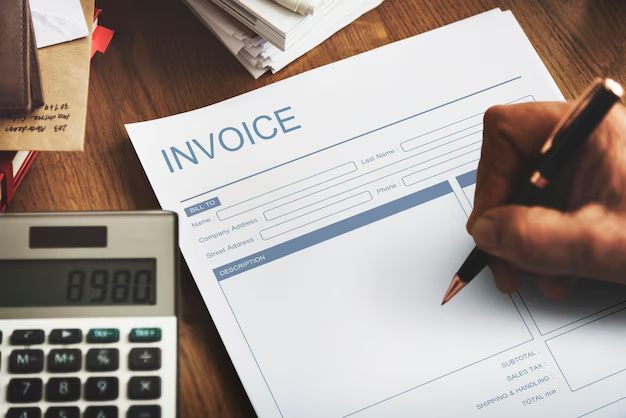Managing invoices for project-based businesses can be a bit tricky, but it’s essential to get it right. Whether you’re a freelancer, a small business owner, or managing a larger team, knowing how to invoice correctly ensures you get paid on time and keep your cash flow smooth. In this blog post, we’ll walk you through everything you need to know about how to invoice in project-based businesses, from setting up the invoice to ensuring timely payments.
Introduction: Why Invoicing Matters in Project-Based Businesses
In project-based businesses, invoicing isn’t just about asking for payment. It’s a critical part of managing your business and ensuring you get compensated for the hard work you’ve put into a project. But without a proper invoicing system, things can quickly get out of hand. Missed deadlines, confusion over payment terms, and even unpaid invoices can become problems.
This blog post will explain the best practices for invoicing in project-based businesses, highlight key tips, and answer some common questions, so you can streamline your process and focus on what you do best: delivering great projects.
1. Setting Up Your Invoice: What to Include
The first step to efficient invoicing is to ensure that your invoice contains all the necessary information. It needs to be clear, professional, and detailed. Here’s what every invoice should include:
- Business Information: Provide your business name, address, phone number, and email. If you have a logo, include that too—it gives a professional touch.
- Client Information: Clearly list the client’s details, including their name, company name (if applicable), and contact information.
- Invoice Number: Each invoice should include a unique identifier for easy tracking and reference.
- Project Details: Provide a brief description of the project or services you provided. Make sure to break down the project into specific deliverables or tasks if needed.
- Dates: Include the date the invoice is issued and the project completion date. Some clients may require the project timeline on the invoice.
- Payment Terms: Specify the payment terms clearly, such as “Net 30” (payment due within 30 days) or any other agreed-upon timeframe.
- Total Amount Due: Break down your costs clearly—whether it’s a flat fee, hourly rate, or based on milestones. Make sure the total is visible and easy to understand.
- Payment Methods: Include the payment methods you accept (bank transfer, credit card, PayPal, etc.) and any additional instructions for processing payment.
2. Invoicing on a Milestone or Completion Basis
In project-based businesses, invoicing usually happens at specific points in the project. Two common approaches are:
- Milestone-Based Invoicing: For longer projects, it’s common to invoice clients as you reach specific milestones. For example, if you’re developing a website, you might invoice after the initial design phase, again after development, and finally upon completion. This helps maintain cash flow during lengthy projects.
- Completion-Based Invoicing: For smaller projects, you may opt to invoice once the entire project is finished. This works well when the scope is limited, and you don’t want to burden your client with multiple invoices.
3. Best Practices for Timely Payments
Even with a well-drafted invoice, getting paid on time can sometimes be a challenge. Here are a few tips to improve the chances of timely payments:
- Set Clear Payment Terms Upfront: Before starting any project, make sure the payment terms are agreed upon in writing. This can be part of your contract or proposal. Let clients know how and when you expect payment.
- Send Invoices Promptly: Once you’ve reached a milestone or completed the project, don’t delay in sending the invoice. The faster you invoice, the quicker you get paid.
- Offer Multiple Payment Methods: Make it easy for clients to pay by offering various payment options like bank transfer, credit card, or even digital payment platforms.
- Send Reminders: If a payment is due and you haven’t received it, send a friendly reminder. Sometimes clients forget, and a gentle nudge can speed things up.
- Late Payment Fees: If you often deal with delayed payments, consider including a clause in your contract about late fees. For instance, you could charge a small percentage for each week the payment is overdue.
4. Common Challenges in Invoicing Project-Based Businesses (And How to Overcome Them)
- Scope Creep: Sometimes, projects expand beyond the original agreement, which can affect your invoicing. Make sure to communicate any additional costs with the client and issue an updated invoice for any extra work.
- Delayed Payments: Some clients may take longer to pay. To avoid this, consider offering a small discount for early payment or using a retainer system where a portion of the project is paid upfront.
- Miscommunication About Terms: Always have clear contracts in place. Misunderstandings can be reduced if everything from payment amounts to deadlines is outlined before work begins.
Conclusion: Streamline Your Invoicing Process for Success
Invoicing in project-based businesses doesn’t have to be complicated. By setting clear expectations, maintaining accurate records, and using invoicing tools, you can ensure that the process is smooth for both you and your clients. Whether you’re invoicing after milestones or at the completion of a project, getting it right will help keep your cash flow in check and your business running smoothly.
FAQs
Q: How often should I invoice for long-term projects?
A: For long-term projects, invoicing at key milestones (e.g., 25% completion, 50% completion, and final delivery) helps maintain cash flow and keeps clients accountable for timely payments.
Q: What payment terms work best for project-based businesses?
A: Common payment terms are “Net 30,” meaning payment is due within 30 days. However, you can set terms that suit your business, like Net 15 or even immediate payment upon receipt of the invoice.
Q: Can I charge a late payment fee?
A: Yes! Many project-based businesses include a late fee in their contracts to encourage timely payments. Make sure to inform clients of this before starting work.
Q: Should I use invoicing software?
A: Yes, using invoicing software like QuickBooks, FreshBooks, or Xero can simplify the process, making it easier to track payments, automate reminders, and store client information securely.
By following these tips and setting clear expectations, you’ll be well on your way to mastering how to invoice in project-based businesses!











